THE LIVING TAO : TIMELESS WISDOM FOR THE MODERN WORLD
This is a podcast dedicated to exploring the profound, yet elusive True Tao (真道). Acknowledging that the essence of Tao is beyond traditional discourse and expression, this series seeks to demystify Taoist principles and adapt them for contemporary listeners. Each episode offers a blend of ancient wisdom and modern insights, providing practical guidance for navigating the complexities of today’s world. Whether you’re a seasoned practitioner or new to the path, join us in discovering how the timeless wisdom of Tao can be lived out in the here and now.
Episodes
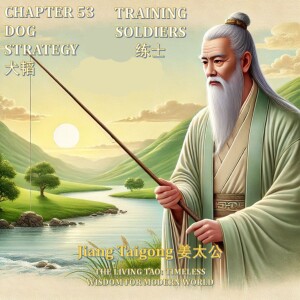
Saturday Dec 07, 2024
Saturday Dec 07, 2024
This Chapter from The Art of War describe Jiang Taigong's advice to King Wu on training soldiers. Taigong advocates for categorizing soldiers based on their individual strengths and motivations, creating specialized units like the fearless "Blade-Facing Warriors" and the vengeful "Revenge Warriors." Eleven distinct soldier types are outlined, each with unique characteristics and fighting styles. Effective army management, according to Taigong, hinges on understanding and strategically utilizing these specialized units. The dialogue concludes with King Wu's approval of Taigong's insightful strategy.
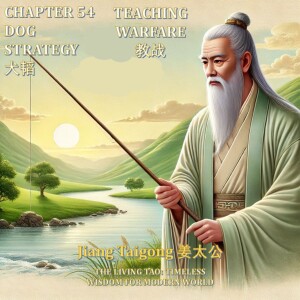
Saturday Dec 07, 2024
Saturday Dec 07, 2024
This Chapter presents a dialogue between King Wu and Jiang Taigong, focusing on military training. Jiang Taigong outlines a hierarchical training method, starting with individual soldiers and culminating in a massive, unified army. This method emphasizes discipline, clear communication, and coordinated maneuvers using drums, gongs, banners, and gestures. The ultimate goal is to create a highly disciplined and effective fighting force capable of awe-inspiring feats. King Wu expresses his approval of this strategy.
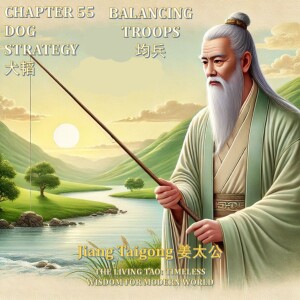
Saturday Dec 07, 2024
Saturday Dec 07, 2024
This Chapter details a conversation between King Wu and Jiang Taigong, discussing military strategy in The Art of War. Jiang Taigong explains the optimal ratios of chariots, cavalry, and infantry for different terrains and battle situations. He also outlines the organizational structure and formations for both chariot and cavalry units, specifying troop numbers per rank and distances between units for both open and difficult terrain. These strategies emphasize maintaining discipline and flexibility for tactical advantage. The discussion concludes with King Wu's approval of Taigong's insightful advice.
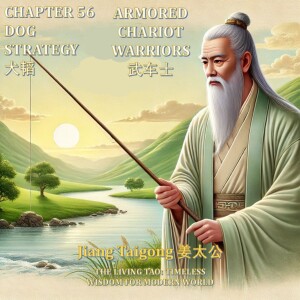
Saturday Dec 07, 2024
Saturday Dec 07, 2024
This Chapter from The Art of War by Jiang Taigong details King Wu's inquiry and Taigong's response regarding the selection process for elite chariot warriors. Taigong outlines rigorous criteria, including age, height, agility, horsemanship, flag-handling proficiency, archery skill, and crossbow strength. These exceptional individuals, termed "warriors of the chariots," were deemed invaluable and deserving of significant reward. The passage presents both Chinese and English versions of this selection process, highlighting the stringent standards for these ancient soldiers. The text emphasizes the importance of physical prowess and specialized skills in ancient warfare.
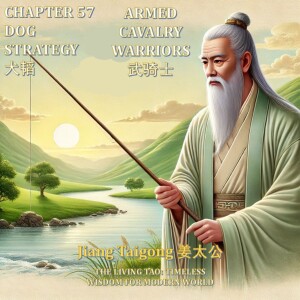
Saturday Dec 07, 2024
Saturday Dec 07, 2024
This Chapte is an excerpt from The Art of War, specifically Chapter 57, detailing Jiang Taigong's advice to King Wu on selecting elite cavalry warriors. Key selection criteria included age (under 40), height (seven feet five inches or taller), exceptional physical prowess, and superior horsemanship and archery skills. The ideal warrior demonstrated advanced tactical abilities, navigating challenging terrain and effectively disrupting enemy formations. These highly skilled individuals, deemed "warriors of the cavalry," were considered invaluable and deserving of generous treatment.
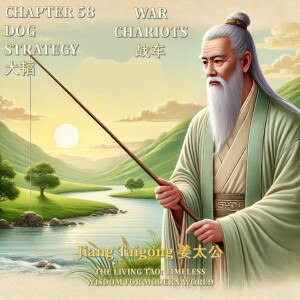
Saturday Dec 07, 2024
Saturday Dec 07, 2024
This Chapter presents a dialogue between King Wu and Jiang Taigong, focusing on the strategic deployment of war chariots. Jiang Taigong outlines ten types of terrain fatal to chariots, emphasizing the importance of avoiding these situations. He then details eight advantageous terrains where chariots can secure victory. This discussion highlights the critical role of terrain analysis in achieving military success, advising on how to exploit enemy weaknesses and avoid perilous situations. The text emphasizes the necessity of understanding both favorable and unfavorable battlefield conditions for optimal chariot warfare. The dialogue concludes with King Wu's acknowledgement of the valuable strategic insight.
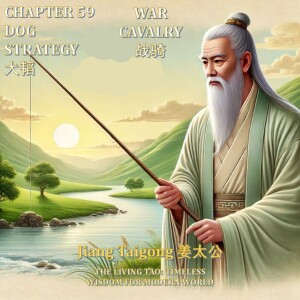
Saturday Dec 07, 2024
Saturday Dec 07, 2024
This Chapter from The Art of War detail a dialogue between King Wu and Jiang Taigong concerning the strategic use of cavalry. Jiang Taigong outlines ten situations where cavalry are advantageous and nine where they are disadvantageous. The ten advantages emphasize exploiting enemy weaknesses and vulnerabilities, while the nine disadvantages highlight terrain-based pitfalls and tactical errors. The discussion focuses on the importance of battlefield awareness, exploiting terrain, and understanding the limitations of cavalry. King Wu ultimately acknowledges the strategic wisdom imparted by Jiang Taigong's analysis.
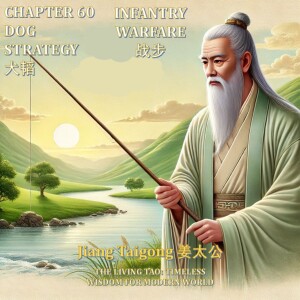
Saturday Dec 07, 2024
Saturday Dec 07, 2024
King Wu of Zhou consults Jiang Taigong, a military strategist, on effective infantry tactics against chariots and cavalry. Taigong details defensive strategies, emphasizing terrain advantage and utilizing various obstacles like caltrops and barricades. He also advocates for a layered defense with strong crossbowmen and a resolute, swift attack. When faced with overwhelming enemy forces, Taigong proposes a comprehensive defensive formation, including trenches and mobile barriers, to ensure survival and eventual victory. The dialogue highlights the importance of adaptability and preparedness in warfare.
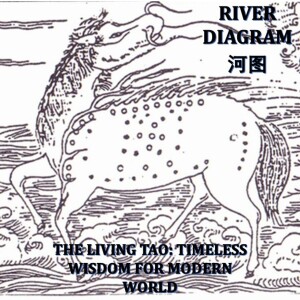
Saturday Dec 07, 2024
Saturday Dec 07, 2024
The Podcast explores the River Diagram (河图), a mysterious ancient Chinese pattern believed to originate from celestial constellations. The text examines its symbolic representation of cosmic principles, including yin and yang, the five elements, and their interrelationships. Multiple interpretations of its origin are presented, ranging from mythical accounts to more pragmatic explanations involving ancient tribes. Archaeological evidence, including ancient pottery and tomb artifacts, is cited to support the diagram's early existence and sophisticated understanding of astronomy. Finally, the text details the diagram's practical applications in various fields, such as medicine, feng shui, and divination.
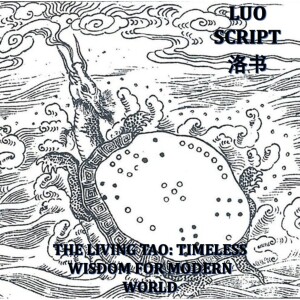
Saturday Dec 07, 2024
Saturday Dec 07, 2024
The provided text explores the Luo Script (洛书), an ancient Chinese numerical and philosophical schema represented as a 3x3 magic square. Its arrangement of numbers 1-9, summing to 15 in each row, column, and diagonal, symbolizes cosmic balance and harmony. The text examines various theories regarding its origins, connecting it to legendary figures like Fuxi and Yu the Great, and detailing its symbolic significance in relation to yin-yang, the five elements, and calendrical systems. Finally, the text describes its practical applications in feng shui, divination, astronomy, and mathematics.

The Living Tao
Welcome to The Living Tao: Timeless Wisdom for the Modern World—your guide to living a life of balance, wisdom, and inner peace. Inspired by the profound teachings of ancient masters, this podcast explores the enduring relevance of these timeless insights in today’s fast-paced world.
Taoist teachings emphasize living in harmony with the natural flow of life—the Tao, or "the Way." This philosophy invites us to embrace simplicity, cultivate humility, and find peace by aligning ourselves with the rhythms of the universe. At its heart, Taoism encourages us to let go of resistance, shed the distractions of ego, and discover the profound serenity that comes from living authentically and in tune with our true nature.
The Tao Te Ching, attributed to Laozi, is one of the most influential texts in Taoism and serves as a cornerstone of our discussions. Its poetic verses guide us to reflect on themes like balance, self-awareness, and effortless action, or wu wei. These teachings are not bound by time or culture—they resonate just as powerfully today, offering insights that help us navigate the complexities of modern life with grace and equanimity.
Each episode of The Living Tao will uncover practical wisdom rooted in these ancient teachings, presenting it in ways that are both accessible and transformative. Whether it's understanding the art of stillness in a world of constant movement, finding clarity amid chaos, or exploring the paradoxes of strength through softness, you’ll discover tools and perspectives to enrich your life and deepen your connection to the world around you.
Whether you're a seasoned practitioner familiar with the Taoist path or a newcomer drawn to its gentle yet profound philosophy, this podcast offers something for everyone. Together, we'll explore how these age-old principles can help us embrace change, cultivate mindfulness, and find a sense of purpose and inner peace in the face of life's challenges.
Join us on this journey of self-discovery, as we bring the wisdom of the Tao into the present moment. Let the timeless truths of this ancient tradition inspire and empower you to live a more harmonious and enlightened life. Tune in, reflect, and allow the teachings of The Living Tao to guide you back to the essence of who you are.








